What Exactly is a Landing Page?
So you’ve heard about a landing page and how they are a must-have for your digital marketing efforts. YAY! I couldn’t agree more!
If this is your first landing page, you may not know where to start, or you may be tempted to just pop a regular page on your website as your landing page or add links to other offers or other features that take away what makes a landing page so effective – and that’s its single focus.
So I want to break down what a landing page is, what makes it special, and how to go about creating a great converting landing page. Because conversions are king with a landing page. Let’s dive in.
What is a landing page, and how does it work?
A landing page is a standalone web page that allows you to capture a visitor’s attention and persuade them to take a desired action. This could be anything from subscribing to your newsletter, downloading a checklist, or making a purchase.
A landing page is designed to convert.
Landing pages are typically designed with a single conversion goal in mind. This makes them different from other types of web pages which might have multiple goals or purposes.
The key to designing an effective landing page is to keep things focused and simple. Too much information can overwhelm visitors and cause them to abandon the page altogether.
Effective Landing Pages
Very effective! In fact, a well-designed landing page can be the key to a successful online marketing campaign.
Research shows that businesses with 10-15 landing pages tend to increase their conversions by 55% compared to those with fewer than ten landing pages.
And businesses with more than 40 landing pages increase conversions by over 500%.
Oli Gardner, conversion rate optimization expert and co-founder of Unbounce, argues that each of your marketing campaigns should have its own landing page.
Why? Creating a dedicated landing page for each campaign lets you use “message matching,” where you can send visitors to a landing page that has the same message as the campaign that made them click. And this means more conversions and happier customers.
But we need to remember that a landing page is very different than your website.
Difference Between A Website And a Landing Page
We touched on this a bit, but let’s dive into the differences a little further.
A website is like an online office or storefront. It’s a way to show the world what you’re all about, what you do, and (most importantly) how to contact you.
A landing page, on the other hand, is more like a sales pitch. It’s a focused way to present a very specific offer, product, or service.
The goal of a landing page is to get people to take a single action, whether that’s signing up for a newsletter, making a purchase, entering a contest, or submitting their contact information. That’s why you’ll notice most landing pages have no navigation, no footer, and no links to outside web pages. Everything is focused on one goal.
That’s because landing pages are designed to convert visitors into leads or customers and nothing else. So if you’re looking to make a sale or capture leads, you’ll want to create a landing page. If you just want to show off what you do, stick with a website.
Do I Need a Landing Page
If you’ve ever wondered whether you need a landing page, ask yourself this question: “Do I want more website visitors to take a specific action?”
If the answer is yes, then the answer is also probably yes to creating a landing page.
A well-designed landing page can be very effective in driving conversions, whether your goal is to get people to sign up for your email list, download a free guide, or make a purchase. Since a landing page is a stand-alone web page that is designed with a single conversion goal in mind, it’s great for conversions.
Is a landing page the same as a home page?
Unlike your home page, which is typically designed to give visitors an overview of your company and what you do, a landing page is focused on a single offer and has one call to action.
This makes it an ideal tool for converting website visitors into leads or customers. So if you’re looking to increase conversions, creating a landing page is definitely worth considering.
Landing Pages and Your Sales Funnel
If you’re running marketing campaigns, you may be familiar with the sales funnel. The top of the funnel is where you generate awareness and interest in your product or service. The middle of the funnel is where you nurture leads and build up excitement. And the bottom of the funnel is where you close deals and make sales.
One of the most important components of a sales funnel is the landing page.
A landing page is the first page that a potential customer sees when they click on an ad or email link. It’s the page that makes the all-important first impression, so it’s crucial that it be well-designed and highly effective. It’s also the page potential customers are sent to purchase. That’s right; your sales page is a landing page too.
If you’re running marketing campaigns, then you need to have a well-designed landing page as part of your marketing funnel. Without one, you’re missing out on an opportunity to turn prospective customers into buyers.
Landing Pages
Though all landing pages are similar, each can have different functions in your sales funnel and marketing campaigns, such as lead generation, sales conversion, and moving visitors through the customer journey.
Lead Generation Landing Pages
The primary purpose of a lead generation landing page is to capture contact information from potential customers so that you can follow up with them and turn them into buyers.
To do this, you need to have a lead capture form on your landing page where visitors can enter their information. This information can include their name, email address, phone number, and any other relevant contact information.
In exchange for their contact information, you might offer a free e-book, a checklist, or even a coupon. Whatever you offer, it should be something that your target audience would find valuable.
Lead Generation Landing Page Examples
- An Accountant Landing page – offering a free consultation
- A Consultant Landing page – offering a free strategy call
- A Gym Landing page – offering a free pass
- A Roofer Landing page – offering a free quote
As you can see, a landing page can work for any business.
It’s important to note that lead generation landing pages are not sales pages. They’re designed to generate leads, not make sales.
RELATED: 13 Free Canva Lead Magnet Templates
Sales Conversion Landing Pages
The primary purpose of a sales conversion landing page is to make a sale.
To do this, you need to have a well-designed page with strong copy that convinces visitors to buy your product or service. You also need to have a compelling offer and an easy-to-use payment system.
It’s important to note that a sales conversion landing page is not a lead generation page. It’s designed to make sales, not generate leads.
Customer Journey Landing Pages
The primary purpose of a customer journey landing page is to move visitors through the customer journey, from awareness to purchase.
It’s important to note that a buyer’s journey landing page is not a lead generation or sales conversion page. It’s designed to move visitors through the customer journey, from awareness to purchase.
Clickthrough Landing Pages
A clickthrough landing page is a type of web page that’s designed to get visitors to click through to another page on your website. Typically, clickthrough landing pages are used as part of a larger marketing campaign, and they usually include a call to action (CTA) that encourages visitors to click through to learn more about your product or service.
So why use a clickthrough landing page?
There are a few reasons. First, click through landing pages can be an effective way to generate leads. By getting visitors to click through to another page on your site, you’re giving them the opportunity to learn more about what you have to offer and how it can benefit them.
This can be a great way to generate sales or sign-ups for your newsletter or another email list.
Second, click-through landing pages can help improve your website’s conversion rate. Your website’s conversion rate is the percentage of visitors who take the desired action on your site, such as making a purchase or signing up for your email list.
By using a clickthrough landing page, you’re increasing the chances that visitors will take the desired action.
Finally, click-through landing pages can help improve your website’s search engine optimization (SEO). SEO is the process of optimizing your website to rank higher in search engine results pages (SERPs), such as Google.
By getting visitors to click through to another page on your site, you’re giving them the opportunity to engage with your website, which can help improve your website’s SEO.
Variety Of Landing Pages
There are a variety of landing page options out there, and each one is designed with a specific marketing strategy in mind.
For example, if you’re running a busy e-commerce store, you’ll want a landing page that can handle a high volume of traffic, accept payments, and showcase your products.
On the other hand, if you’re promoting a product or service that requires a lot of explanation, you’ll need a landing page with plenty of space for copy and CTAs.
And if you’re simply looking to generate leads, there are landing pages tailored for lead capture, as well. So whatever your business goals may be, there’s sure to be a landing page that’s perfect for you.
Anatomy Of A Landing Page
Now that you know the different types of landing pages, let’s take a look at what goes into creating landing pages that are effective and convert your prospects.
Copy
The first and most important element of a landing page is the copy. The copy is the text on the page that convinces visitors to take action.
It should be well-written, persuasive, and relevant to your target audience. It should also be clear and concise.
✓ Headline, Subheadings, and Body Copy
The headline is the most important part of the copy. It should be attention-grabbing and make a promise that your product or service can deliver.
The subheadings should be clear and concise, and they should provide more information about the headline.
The body copy should be well-written and persuasive. It should provide more information about your product or service and why it’s the best solution for your target audience’s needs.
✓ Call to Action
The call-to-action (CTA) is the final part of the copy. It should also be clear and concise, and it should tell visitors what you want them to do, such as “buy now” or “sign up.”
Images
The second element of a landing page is images. Images are important because they help to break up the text and make the page more visually appealing.
They can also help to convey a message or provide more information about your product or service.
Choose images that are relevant to your product or service and that will appeal to your target audience.
Design
The third element of a landing page is design. The design should be simple and clean, and it should focus on the copy and images.
The headline and CTA should be prominently featured, and the page should be easy to navigate.
Creating A Landing Page
✓ Keep it focused: As mentioned above, the whole point of a landing page is to achieve a single goal. Don’t try to cram too much information onto the page.
✓ Make it visually appealing
Use images, videos, and infographics to break up the text and catch your visitors’ attention.
✓ Use persuasive copy
Write headlines and descriptions that will persuade people to take the desired action.
✓ Include a strong call-to-action
Make it easy for visitors to know what they need to do next. Include a button or link that clearly says what you want them to do.
✓ Remove distractions
Get rid of anything on the page that could distract visitors from taking your desired action. This includes navigation menus, sidebars, and social media widgets.
✓ Use A/B testing
Try out different versions of your landing page to see what works best. Test things like the headline, copy, call-to-action, and design elements.
Creating an effective landing page can be a bit of trial and error. But if you keep these tips in mind, you should be able to create a page that converts well.
Elements Of A Landing Page
Here are a few elements and landing page best practices to create a high converting landing page.
✓ A Strong Headline
First and foremost, you need a strong headline that will grab the attention of your target audience and persuade visitors to stick around.
✓ A Hero Image
When designing landing pages, you should also include a hero image or video above the fold (before you need to scroll) that gives site visitors a quick overview of what your page is all about. You’ll also want to include powerful images and persuasive copy to drive home your message.
✓ Clear Call To Action
In addition, your landing page should have a clear call to action so that visitors know what they should do next. I know we mentioned this before, but it really is that important.
✓ Social Proof
Finally, don’t forget to include social proof in the form of testimonials or customer reviews in your landing page content. These elements will help to build trust and give visitors the confidence they need to convert.
Let’s also talk about what not to include on your landing page.
What Not to Include On A Landing Page
A landing page is like a first date, so you want to make a good impression, but you don’t want to give away too much too soon. Just like you wouldn’t show up for a first date wearing your ratty old college sweatshirt, you don’t want your landing page to be cluttered, confusing, or off-putting. So what should you leave off your landing page?
Here are a few things to avoid:
✓ Too much text
A landing page should be short and sweet, with just enough information to pique the reader’s interest. Remember, you’re trying to entice the visitor to take action, not give them a novel’s worth of material to read.
✓ Stock photos
Would you use a stock photo on a first date? Of course not! Your landing page should be filled with original, high-quality images that reflect your brand.
✓ Distractions
Just like on a first date, you want the focus to be on you. That means keeping sidebars, pop-ups, and other distractions to a minimum. After all, you don’t want anything taking away from your message. And no links to other web pages; you want to force them to make a decision or leave the page, not get distracted and click to other pages.
Optimizing Your Landing Page
A well-designed landing page can help to increase conversion rates and drive sales, while a poorly designed page can cost you dearly in lost opportunities.
Here are a few tips on how to optimize your landing page for the best results:
Keep it simple. When it comes to landing pages, less is definitely more. Avoid cluttered designs and lengthy forms, and focus on delivering a clear and concise message.
Use strong visuals. Humans are visual creatures, so make sure your landing page packs a graphic punch. Use high-quality images and videos to grab attention and convey your message clearly.
Make it easy to navigate. Your visitors should be able to easily find their way around your landing page. Use clear headings and simple menus to help them get where they need to go without getting lost along the way.
Offer something valuable. Whether it’s a free ebook, a discount code, or access to exclusive content, give your visitors something that will make their visit worthwhile.
Test, test, test! Landing pages are never “finished .” Always be testing different elements of your page to see what works best. Landing page optimization includes trying different headlines, copy, images, and calls to action to find what works best for your business.
Create Your Own Landing Page?
Want to create your own landing page but aren’t sure where to start? Well, you’re in luck!
With the right tools, it’s actually quite easy to put together a professional-looking landing page in no time. There are a number of landing page templates and builders available online that can help you get started.
Landing page builder options:
Simply choose a landing page builder and then a template that best suits your needs, add your content, and voila! You’ve got yourself a landing page without needing any design or coding skills.
Of course, if you want to get really creative, you can always build your own landing pages from scratch. But why bother when there are so many great landing page templates out there that do the heavy lifting for you? So go ahead and give it a try. You might be surprised at how easy it is to create a landing page that looks professional and packs a punch.
Creating landing pages is an important step in the launch of any marketing strategy. By following these tips, you can create a page that is designed to convert visitors into customers.
The Landing Page
So there you have it – a landing page is key to your digital marketing success and should not be ignored! It’s important to remember that the focus of a landing page is conversions, and keeping it simple will help you achieve those conversions.
Have questions about creating or optimizing your landing page? Leave them in the comments below, and I’ll do my best to answer them.
Looking for the best landing page tools for a small business? Check out how anyone can create a high-converting landing page in 20 minutes or less.
About Digital Marketing Expert Torie Mathis
 Torie Mathis helps entrepreneurs, like you, use digital marketing to grow your business without wasting time, money, or your sanity. She is a best-selling author, Army veteran, speaker + trainer, and your digital marketing coach. You don't need crazy tech skills, buckets of cash, or dedicated staff to market your business. In fact, you don't even need a lot of time. What you need is to be SMART.
Torie Mathis helps entrepreneurs, like you, use digital marketing to grow your business without wasting time, money, or your sanity. She is a best-selling author, Army veteran, speaker + trainer, and your digital marketing coach. You don't need crazy tech skills, buckets of cash, or dedicated staff to market your business. In fact, you don't even need a lot of time. What you need is to be SMART.
Torie hosts SMART AF, a show for non-techy entrepreneurs looking to grow their business, with her husband Sean and is the creator of SMART AF Magazine. Learn from Torie at the Smart Arsenal and on her channel.
What do you think? Let's talk! Leave a comment.

Is Your Marketing Taking You Away From The Things You Love?
What if you could get amazing results from your marketing without spending more time, more money, AND it was easy and predictable? Sean and I have suffered through it too, and we found the answer...
Hi! I'm Torie!
 I help entrepreneurs (like you) use digital marketing to get more clients + make more money. And I make it easy!
I help entrepreneurs (like you) use digital marketing to get more clients + make more money. And I make it easy!
You don’t need crazy tech skills, buckets of cash, or dedicated staff to market your business. You don’t even need a lot of time.
What you need is to be SMART.
Smart Marketing For
Get Smart AF
DELIVERED TO YOUR INBOX
from your Digital Marketing Coach Torie Mathis!
Let's get SMART!
Let's Connect!
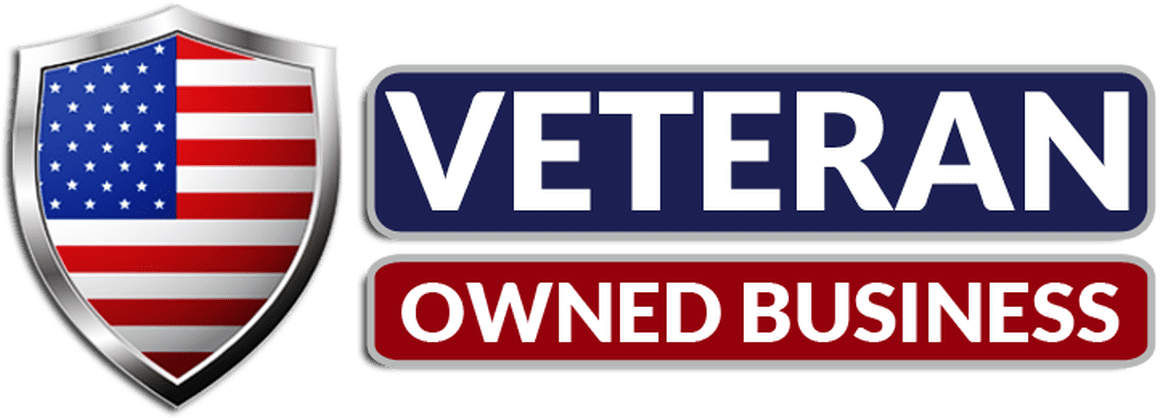
*Posts may contain affiliate links. If you use these links to purchase, I may earn a commission at no additional cost to you.




 I help entrepreneurs learn digital marketing.
I help entrepreneurs learn digital marketing.
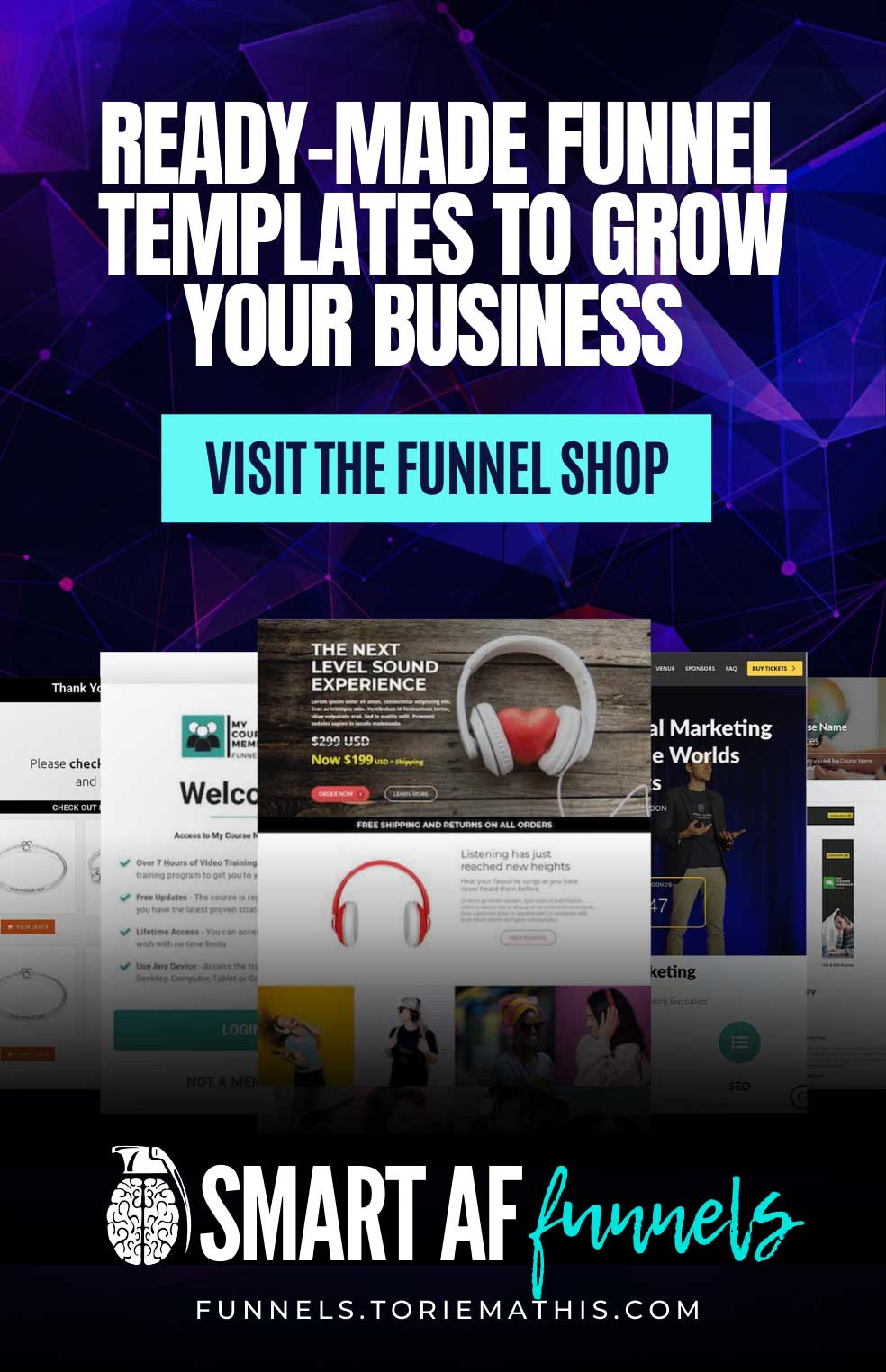




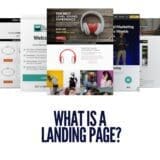
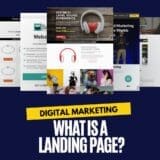
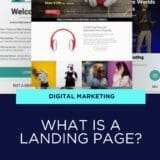
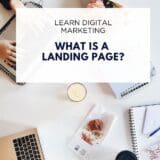

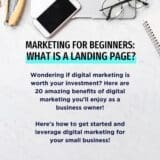
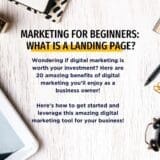
0 Comments